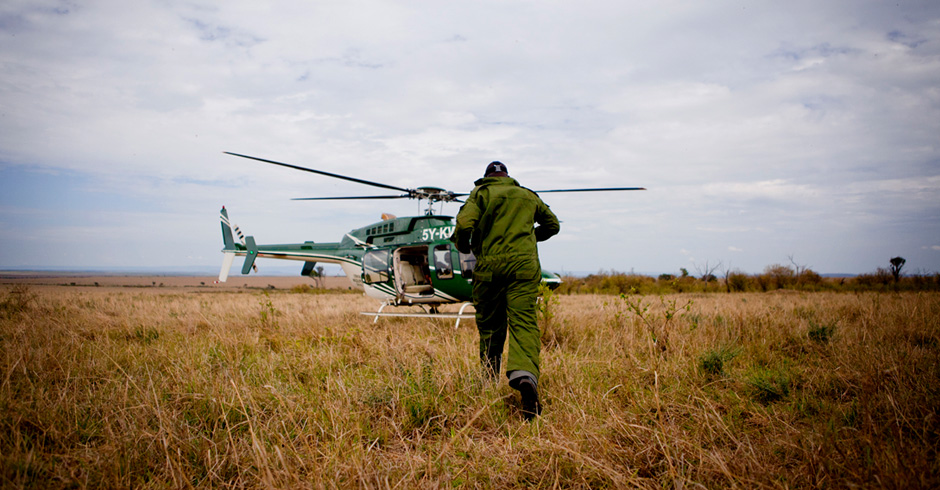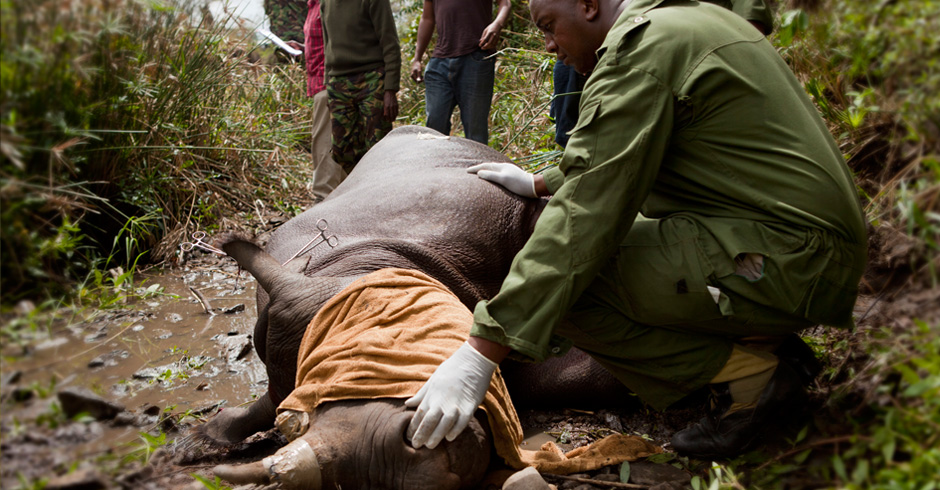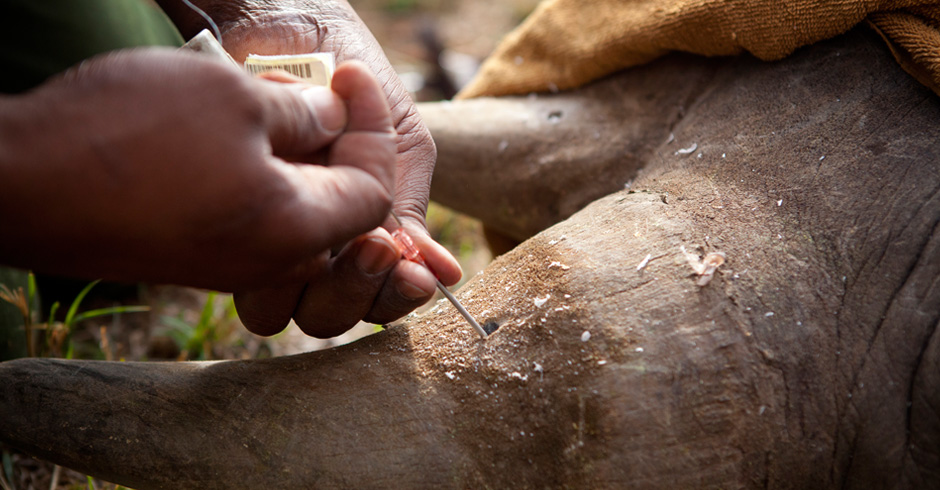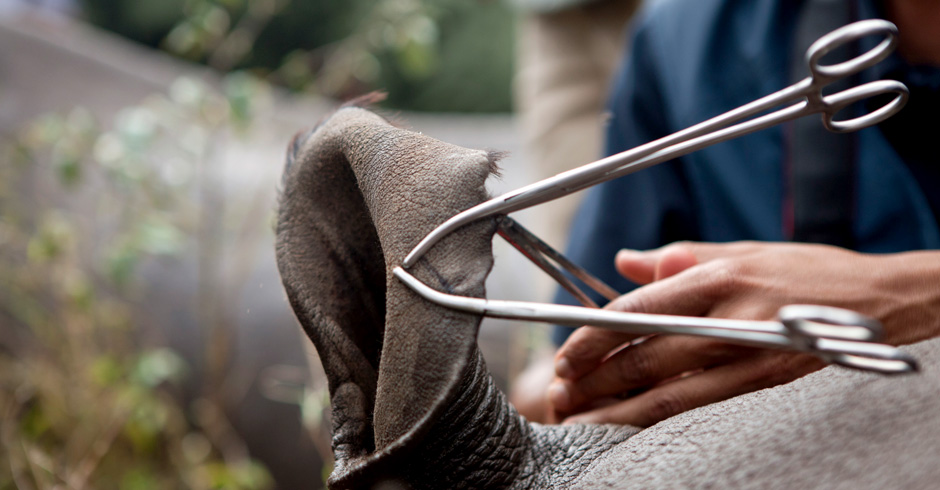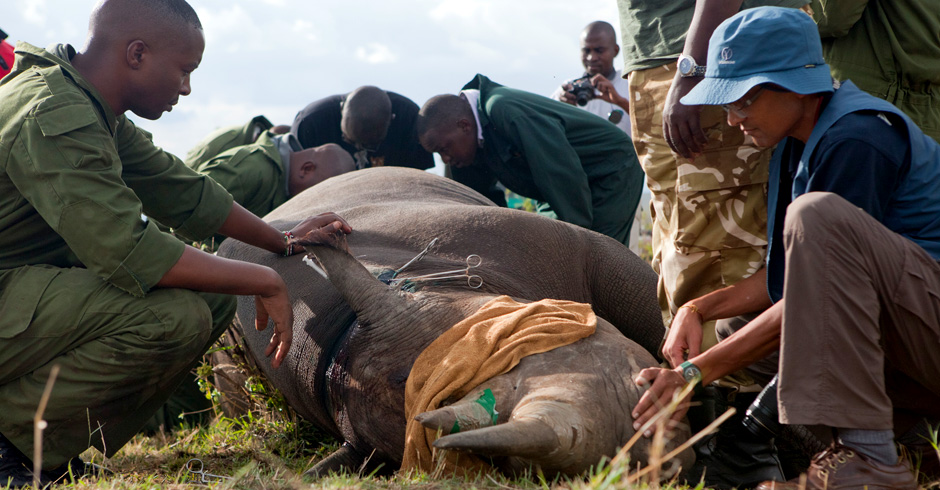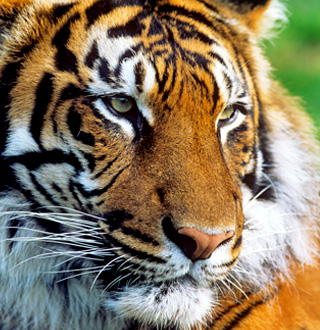
Under siege
Rhinos are being killed in record numbers for their horns. To find and kill them, poachers are using a variety of tools and techniques. But so are the people fighting to save them.

Discover how WWF is working to protect rhinos in Africa and Asia, and how you can help.
1 Tracking and tracing
© Brent Stirton / Getty Images / WWF-UK
Microchipping away at poaching
Rhinos are facing another fight for their very survival. Last century, they were hunted and poached to the brink of extinction. A global conservation campaign gave them a lifeline, but their future is once again hanging by a thread.
Backed by organised criminal networks, poachers are using 21st century weapons and technology to supply the growing demand for rhino horn, primarily in Viet Nam. But conservationists are fighting back with new tools and techniques of their own. WWF has been working with the Kenya Wildlife Service to microchip black rhinos, helping them to gather crucial data – and provide evidence to prosecute poachers.
Hidden in their horns, the minute chips allow researchers to individually identify Kenya’s endangered rhinos and monitor each animal. And if poachers do strike, those tiny bits of technology could ensure that they – and others along the trafficking chain – pay for their crimes.
2 Future is up in the air
© WWF / Green Renaissance
Giving rhinos more room to breed
Nowhere is the current crisis more severe than in South Africa. A record 1,215 rhinos were poached in 2014 and the killing goes on – despite greater efforts to protect them. But some new populations of black rhinos are thriving.
Back in 2003, WWF began translocating critically endangered black rhinos, trucking and airlifting them to reserves around the country. Over 160 have been safely relocated since then. Released onto large tracts of prime black rhino habitat, the ten founder populations have flourished, with more than 70 calves being born.
By expanding their living space, the project has ensured there are significantly more black rhinos today than there otherwise would have been. And more translocations are planned. But extra land and enhanced anti-poaching efforts alone cannot halt today’s rhino poaching crisis. So WWF is also working to help tackle the traffickers and reduce demand for rhino horn in Viet Nam.

Huge surge in rhino poaching in South Africa, home to over 80% of the world’s rhinos.
Modern airlift techniques are quick and harmless to the rhinos – always WWF’s main concern in these operations.
3 Cracking the illegal trade
© WWF / James Morgan
Stopping the buying and the trafficking
The future of the world’s remaining rhinos will ultimately be decided in Asia, particularly in Viet Nam, where there is growing demand for their horns – either as status symbols or for their perceived health benefits. Until this demand is reduced, rhinos will remain at risk.
WWF and TRAFFIC, our wildlife trade specialist partner, are using innovative approaches to change consumer behaviour and tackle this demand, such as the Chi (‘Strength of Will’) campaign in Viet Nam. Rather than focusing on the plight of endangered rhinos, this campaign seeks to undermine one of the main emotional reasons for buying rhino horn – by showing influential men that they don’t need it to bolster their self-esteem or demonstrate their success in business.
However, changing consumers’ minds does not happen overnight. In the meantime, organized criminal gangs will continue to try to profit from the rhino horn trade. And WWF will continue to make it as hard as possible for them to operate – by supporting communities and rangers to protect rhino sanctuaries and by working with partners and governments to break up their trafficking networks from Africa to Asia. Only by targeting all points along the trade chain will those striving to save the rhino have a chance of winning the war.

Illegal trade in rhino horn
-
Source countries
WWF is working in countries in Africa and Asia to help stop the poaching.
-
Consumer countries
WWF and TRAFFIC are trying to stop the buying of rhino horn through behavioural change initiatives.
-
Transit countries
WWF is supporting efforts to stop the trafficking by breaking the illegal trade chains.
It's more critical than ever to support communities that are the vanguard of rhino conservation efforts.

Rhino poaching is a complex challenge, we need a range of different tools to stop it.

Nepal has proven that zero poaching of rhinos is possible. Others must show the same desire to tackle wildlife crime.

Help WWF save rhinos
Rhinos have long been a focus of WWF's protection efforts. You can help to save this flagship species by donating to WWF conservation work today.

